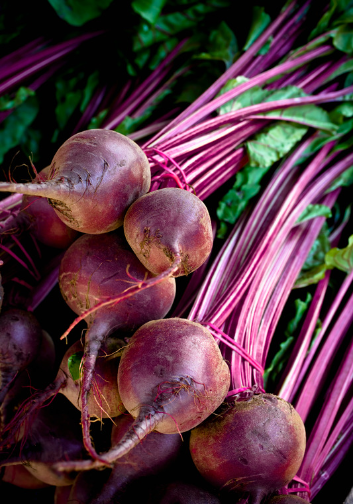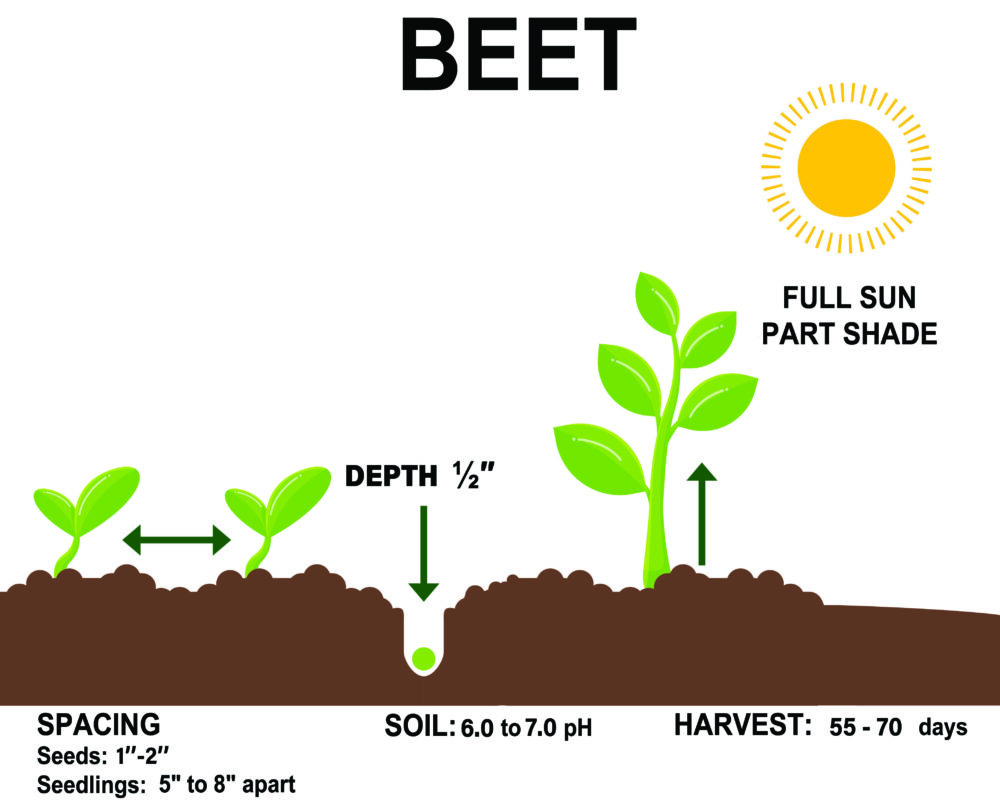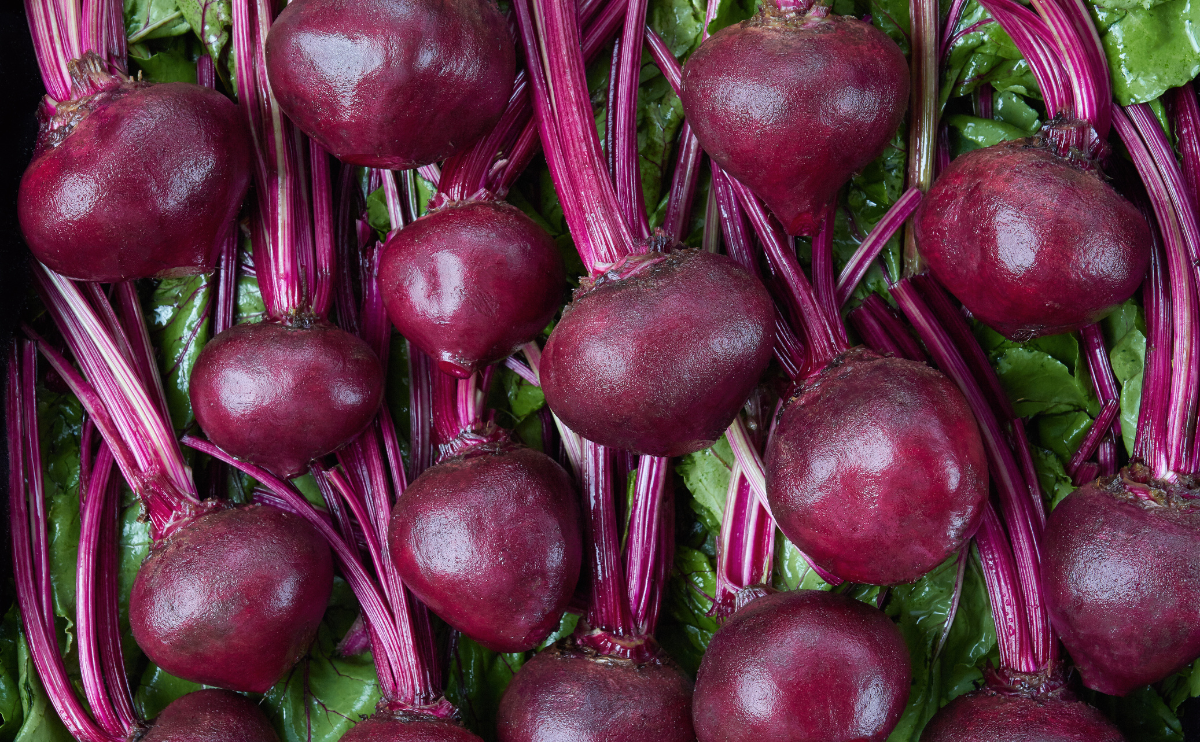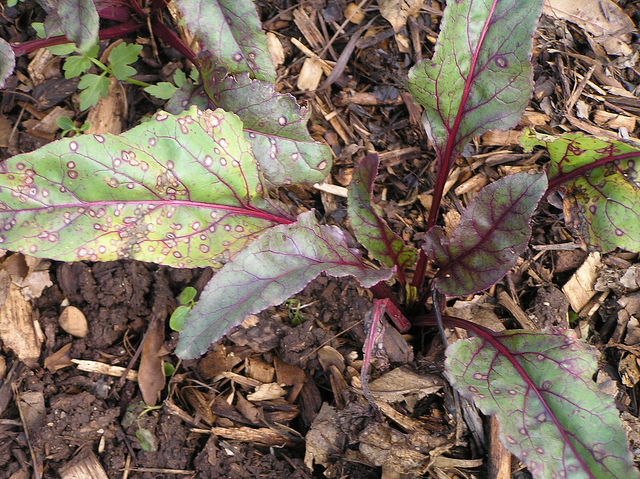The beet plant (Beta vulgaris) is a fast-growing vegetable that can be grown just about anywhere. Although beets are known as a root crop, all parts of the beet plant are edible. Tender beet greens can be harvested when thinning a row of beets, and mature leaves make good greens when it’s time to pull up the whole plant. The most commonly known root beets are red, but golden and striped varieties are also available.
Beets are a cool-season vegetable crop, so you might be able to get both an early crop planted in the spring as well as a crop planted in the summer or fall. Most beet varieties are ready to harvest about two months after planting.

| Common Name | Beet, beetroot |
| Botanical Name | Beta vulgaris |
| Family | Amaranthaceae |
| Plant Type | Annual, vegetable |
| Size | 12–18 in. tall, 18–24 in. wide |
| Sun Exposure | Full sun, part sun |
| Soil Type | Loamy, moist, well-drained |
| Soil pH | Acidic, neutral (6.0–7.0) |
| Bloom Time | Seasonal |
| Hardiness Zones | 2–11 (USDA) |
| Native Area | Europe |

When to Plant?
This will be determined by your planting zone. There is a final frost date for each area. As a result, you can plan your gardening activities around this date. Check our Frost Dates Across North America: First & Last Frost Dates Chart. However, the date will not be the same for every plant.
How to Plant
Start sowing beets in your garden 2 – 3 weeks before the last spring frost.
In late summer or early autumn, 6 – 8 weeks before the first mid-autumn frost, you can plant the beets again.
Beets can be grown as winter beets in regions with mild winters.
Add aged compost before planting the beets in the garden to maximize your yield.
Make sure there are no stones or other obstructions in the soil to help beetroots grow well.

The best soil pH is between 6.0 and 7.0. Soil with a low pH (below 6.0) is undesirable for beets. It is ideal to plant beets right in the garden so that you will not disturb the roots. Sow seeds ½-inch deep and 1 to 2 inches apart. Young plants will need to be rowed 3 – 4 inches apart once the greens are about 4 inches tall. Mulch and then water regularly for about 1 inch per week. Beets must retain a lot of moisture.
How to Cultivate
Water – A good watering schedule for beets provides an inch of water per week. It is a combination of rainwater and supplemental irrigation. If you receive a half-inch of rain, you only have to provide an additional half-inch of irrigation water. Use a rain gauge to measure the amounts of rainfall and irrigation water your garden receives. A possible exception to this 1-inch rule is in the case of a storm that delivers a sudden, intense amount of rain in a short time. You may receive 2 inches of rain, but most of it will not penetrate the ground. So again, use your best judgment in these cases. It never hurts to stick your finger in the ground to feel for moisture.
Soil – 6.0 to 7.0 pH, loamy, sandy
Spacing – seeds – 1″ – 2″
Seedlings – 5″ – 8″
Seed life: 4 years
Sun: Full sun. Part shade
Germination: 5 – 8 Days, 40°F – 80°F
Day to Harvest: 55 – 70 days
How to Harvest
Collect beetroots when they are about the size of a golf ball. Massive roots can be challenging and woody. Loosen the soil around the beets and carefully lift them out of the ground.
Beets store best at 34°F and 90 percent humidity. Do not allow them to freeze.
Hydroponics
Germination: Start by germinating your beet seeds. You can do this by placing them in a moist paper towel or using a seed starting tray. Once the seeds have sprouted, transfer them to your hydroponic system.
pH range: Beets prefer a slightly acidic pH range between 6.0-6.5. You can use a pH meter or test kit to monitor and adjust the pH level of your hydroponic solution.
EC: The electrical conductivity (EC) for beets is between 1.6-2.2 mS/cm. This measures the total dissolved salts in the hydroponic solution, so it’s important to monitor it regularly and adjust as needed.
PPM: The recommended parts per million (PPM) for beets is between 1120-1540. This measures the concentration of nutrients in the hydroponic solution, so it’s important to monitor it regularly and adjust as needed.
Humidity: Beets prefer a humidity level between 50-70%. Use a hygrometer to monitor and adjust the humidity level in your growing area as needed.
Light hours: Beets require at least 8-10 hours of direct sunlight or artificial light per day. If you’re growing them indoors, you can use grow lights to provide the necessary light.
Temperature air: The optimal temperature range for beets is between 60-70°F (15-21°C). It’s important to maintain a consistent temperature in your growing area to ensure healthy growth.
Temperature water: The water temperature should be kept between 65-75°F (18-24°C) to promote healthy root growth and nutrient uptake.
With these guidelines, you should be able to successfully grow beets hydroponically. Good luck!



